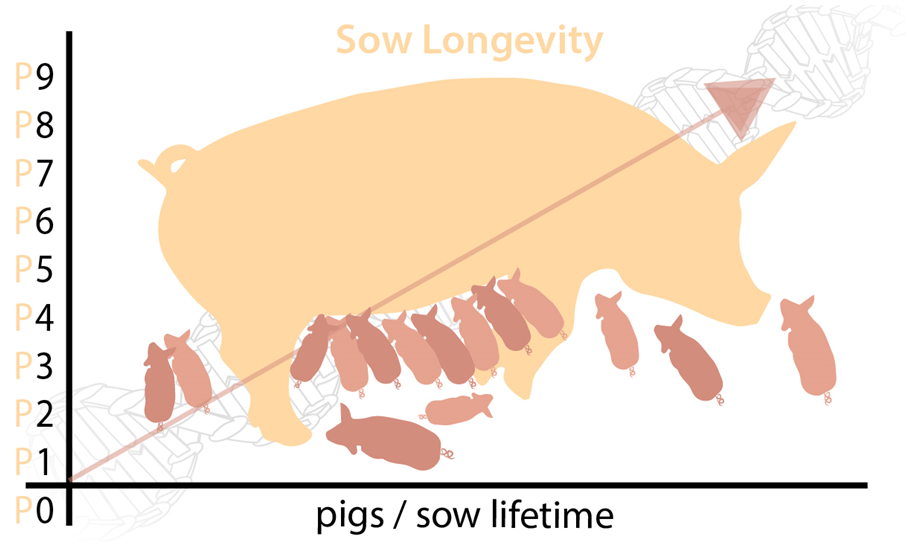



Genesus Global Technical Report: selection for sow longevity in commercial pig farming
Sow longevity is a key economic component in commercial pig farming, as it is directly proportional to the herd replacement rate and to the total number of piglets weaned per sow lifetime.Even though sow longevity is a major economic factor, no consensus exists in the scientific community regarding the definition of the trait, and also on ways to estimate proper breeding values for this trait (Srenius and Stalder, 2006, J. Anim. Sci. E166-E171; Engbolm et al., 2015, J. Anim. Breed. Genet. 138-144).
Published literature suggests different methods to estimate sow longevity.
- Survival analysis where the breeding values indicate proportional risk of sows culled at any point of time. (Meszaros et al., 2013, Comput Methods Programs Biomed. 503–510.)
- Stayablity, a trait that indicates if a sow has survived to a particular parity or a time point or not. This model has been further modified to include repeated records, by recording if an animal has been dead or alive at any given time point, which can then be analysed using repeatability models or random regression models.
- Routine evaluation procedures that analyse traits like length of productive life (from first farrowing to removal date), lifetime number of piglets produced, etc.
Heritability estimates (how much the differences in pig’s DNA can explain the differences in the traits we measure) vary among different sow longevity traits and among the populations analysed and ranged between 0.02 and 0.25. (Srenius and Stalder, 2006, 2006, J. Anim. Sci. E166-E171)
These results suggest that it is possible to select sows for longevity. But, as sow longevity traits can only be measured after the sow has been culled or died, the gilt or replacement sow selection decision for longevity can only be done based on information from relatives. Because of this, the accuracy of breeding values estimated for longevity traits from pedigree-based relationships will be low.

By using genomic information, now we can get more accurate estimates of breeding values for sow longevity traits. Another possibility is to use information from traits that are expressed earlier in life and are highly genetically correlated with longevity. Such traits are called indicator traits.
Including these indicator traits in the evaluation will improve the accuracy of sow longevity breeding values. Some examples of indicator traits expressed early in life and that are genetically correlated with sow longevity are, age at first farrowing, the accumulated number of piglets born alive up to various parities, probability of a gilt entering the farm to survive until mating or to various parities, leg conformation traits, etc. (Engbolm et al., 2015, J. Anim. Breed. Genet. 138-144).
Along with indicator traits, using genomic selection methodologies, selections can be performed accurately for sow longevity at early stages of life.
At Genesus, we collect multiple sow longevity phenotypes from all the sows in the nucleus and at various multipliers and commercial farms. Currently, we are investigating multiple approaches for accurately estimating sow longevity breeding values, utilising these phenotypes along with their genotypes.
All these processes will assure highest genetic improvement and will ultimately benefit Genesus customers.









